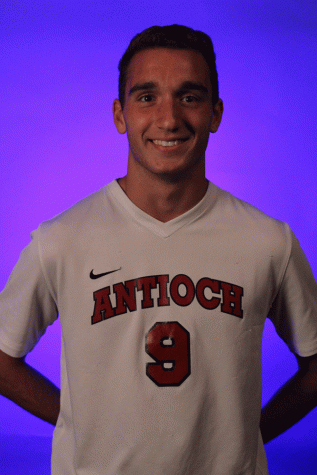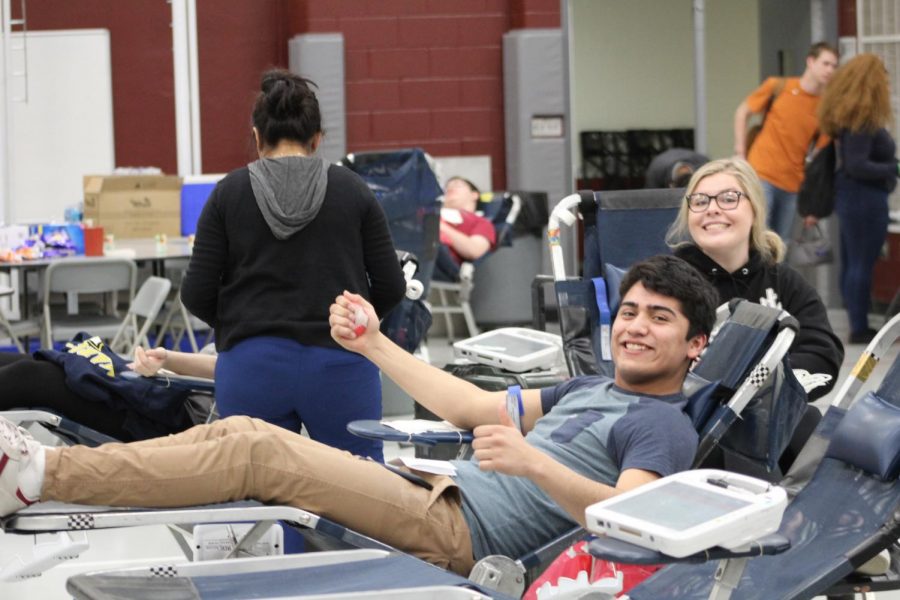Sequoits Saving Lives
Annual blood drive at ACHS attracts a number of student participation.
Seniors Christian Ortiz and Victoria Henkel smile as they donate blood.
The Antioch Community High School blood drive is popular in both the school and the community. ACHS holds this event twice in a school year, one is in the fall and one in the spring. This year, the spring event was held on Wednesday, March 20.
“The blood drive teaches community relations to the students,” physical education teacher and blood drive coordinator Gregg Henning said. “It shows that giving back to the community is something that the students should be doing as they get older.”
Precautions are typically taken before a participant can donate blood. These are taken to make sure the participant is in a good condition to donate and hopefully not experience side effects. They’re asked about their medical history as well as lifestyle choices. The most common issue for donors that prohibits donating is a low blood iron level.
“It’s unfortunate not to donate blood because of having low iron,” senior Leah Rolland said. “I like to help people and this was my chance to make a difference so it is just upsetting. I was also very nervous to donate to begin with.”
The act of giving back to the community is a motivator for the students who choose to participate.
“I think saving lives is important,” senior Victoria Henkel said. “My little bit of blood that I donate can save someone’s life and make a bigger difference to someone else than it does to me right now.”
In addition to saving lives, students also receive recognition for participating. If a student donates four times within their four years at ACHS, they’re recognized with a red cord for their graduation ceremony.
“We wanted the students to be recognized for the community act they’re doing by giving blood,” Vitalant account manager Howard Knaizer said. “It takes effort, courage, and an acknowledgement for the need of blood in the community.”
At the blood drive, the students, community members, and faculty were able to save 648 lives thanks to the donations from everyone involved.


